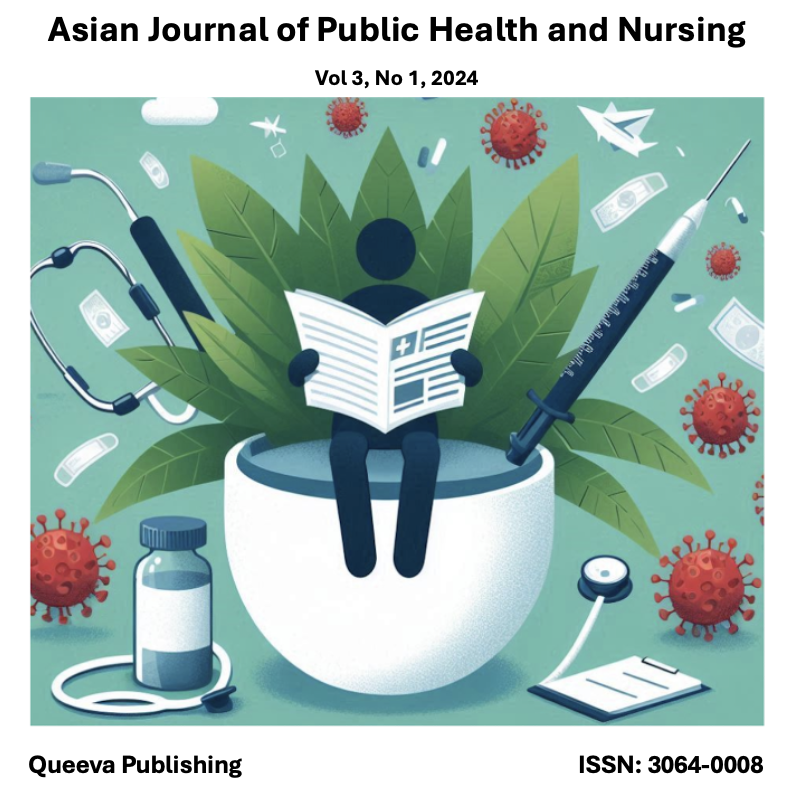The Relationship Between Exploitative Show Viewing Habits and Aggressive Behavior in Adolescents
Main Article Content
Abstract
Background: Exploitation is a form of crime and violence that can jeopardize a child’s future. Adolescents who frequently watch exploitative content are more likely to exhibit aggressive tendencies and may become desensitized to violence in daily life, leading to both physical and psychological consequences. This study aims to explore the relationship between the habit of watching exploitative shows and aggressive behavior among adolescents.
Methods: A cross-sectional study was conducted among 76 adolescents in Aceh, Indonesia. Data on demographics, viewing habits of exploitative shows, and aggressive behavior were collected using a researcher-modified questionnaire.
Results: Over half of the respondents were female (57.9%), with the majority categorized as heavy viewers of exploitative shows (69.7%), and aggressive behavior identified in 59.2% of participants. A significant association was found between the habit of watching exploitative shows and aggressive behavior (p-value = 0.002, OR = 5.790).
Conclusion: Adolescents who frequently consume exploitative content struggle to regulate their behavior effectively, as the dependency on such shows fosters aggression. Adequate supervision of adolescents is crucial, and it is recommended that social media platforms prioritize broadcasting educational content to promote positive personality development.
Article Details
Issue
Section

This work is licensed under a Creative Commons Attribution-NonCommercial-NoDerivatives 4.0 International License.
How to Cite
References
Adawiyah, atul et al. (2024) ‘Perlindungan Hukum Terhadap Anak Korban Eksploitasi (Studi Di Dpmppa Kota Jambi)’, 25(1), pp. 129–140.
Anantasari (2016) Menyikapi Perilaku Agresif Anak.
Buss, A.H. (2016) ‘The Aggression Questionnaire. Journal of Personality and Social Psychology’, The American Psychological Association, Inc. [Preprint].
Delhove, M. and Greitemeyer, T. (2021) ‘Violent media use and aggression: Two longitudinal network studies’, The Journal of Social Psychology, 161(6), pp. 697–713. Available at: https://doi.org/10.1080/00224545.2021.1896465. DOI: https://doi.org/10.1080/00224545.2021.1896465
Faridah U, Yulisetyaningrum Y, Indanah I, D.Y. (2019) ‘Hubungan Menonton Televisi Dan Bermain Game Online Yang Mengandung Tayangan Kekerasan Dengan Perilaku Agresive Pada Hubungan Menonton Televisi Dan Bermain Game Online Yang Mengandung Tayangan Kekerasan Dengan Perilaku Agresive Pada Anak Usia Sekolah Di M.’, p. 337– 45. Available.
Gentile, D.A. et al. (2004) ‘The effects of violent video game habits on adolescent hostility, aggressive behaviors, and school performance’, Journal of Adolescence, 27(1), pp. 5–22. Available at: https://doi.org/10.1016/j.adolescence.2003.10.002. DOI: https://doi.org/10.1016/j.adolescence.2003.10.002
Hidayati AN (2016) ‘Hubungan Perilaku Melihat Televisi Dengan Agresivitas Anak Usia 3-6 Tahun Di Paud Kb Al Mukmin Tempuran Kamongan Srumbung Magelang Naskah Publikasi’.
Hodges, B.J. (2014) ‘Organization Theory: A Strategic Approach’, in Fifth Edition. International Edition. New Jersey: Prentice-Hall International, Inc.
Holmgren, H.G. et al. (2023) ‘Toddlers and the Telly: A latent profile analysis of children’s television time and content and behavioral outcomes one year later in the U.S.’, Journal of Children and Media, 17(3), pp. 298–317. Available at: https://doi.org/10.1080/17482798.2023.2195194. DOI: https://doi.org/10.1080/17482798.2023.2195194
Huesmann, R.R. et al. (2003) ‘Longitudinal Relations between Children’s Exposure to TV Violence and Their Aggressive and Violent Behavior in Young Adulthood: 1977-1992’, Developmental Psychology, 39(2), pp. 201–221. Available at: https://doi.org/10.1037/0012-1649.39.2.201. DOI: https://doi.org/10.1037//0012-1649.39.2.201
Kirani, M.A. (2024) ‘Representasi Kekerasan Keluarga Pada Film Custody dan Loveless (Doctoral dissertation, Universitas Islam Indonesia).’
KPAI, H. (2023) ‘Rakornas dan Ekspose KPAI 2023: Membangun Indonesia Bebas Kekerasan Terhadap Anak’, Berita KPAI, Siaran Pers.
Krahe, B. (2015) Perilaku Agresif. Yogyakarta; Pustaka Pelajar. Yogyakarta; Pustaka Pelajar.
Mutiara, J.A. (2022) ‘Sosialisasi Pengaruh Tayangan Televisi Terhadap Perkembangan Perilaku Negatif Anak Usia 2-6’, 3, pp. 603–608.
Rahmawati, A. and Asyanti, S. (2017) ‘Fenomena Perilaku Agresif Pada Remaja Dan Penanganan Secara Psikologis’, Publikasiilmiah.ums, 6, pp. 3–4.
Syam, A.S.M. and Nurhalisah (2023) ‘Dampak Tontonan Film Kartun Terhadap Perilaku Sosial Anak Usia 4-5 Tahun di Kabupaten Bone’, EDUCHILD : Journal of Early Childhood Education, 4(2), pp. 76–92. DOI: https://doi.org/10.29313/bcsecte.v2i2.3375
Syavitri, D.N. (2024) ‘Hubungan Antara Kontrol Diri Dan Kematangan Emosional Dengan Agresivitas Pada Siswa Smk “X” Di Kota Pati’, (Doctoral dissertation, Universitas Islam Sultan Agung Semarang). [Preprint].
Taggart, J., Eisen, S. and Lillard, A.S. (2019) ‘The current landscape of US children’s television: violent, prosocial, educational, and fantastical content’, Journal of Children and Media, 13(3), pp. 276–294. Available at: https://doi.org/10.1080/17482798.2019.1605916. DOI: https://doi.org/10.1080/17482798.2019.1605916
Trisna, Y. (2019) ‘Hubungan Kebiasaan Menonton Tayangan Kekerasan Di Televisi Dengan Perilaku Agresif Pada Anak Sekolah Di Sdn Mardiyuana Bogor’, Jurnal Ilmiah Wijaya, Volume 11.




